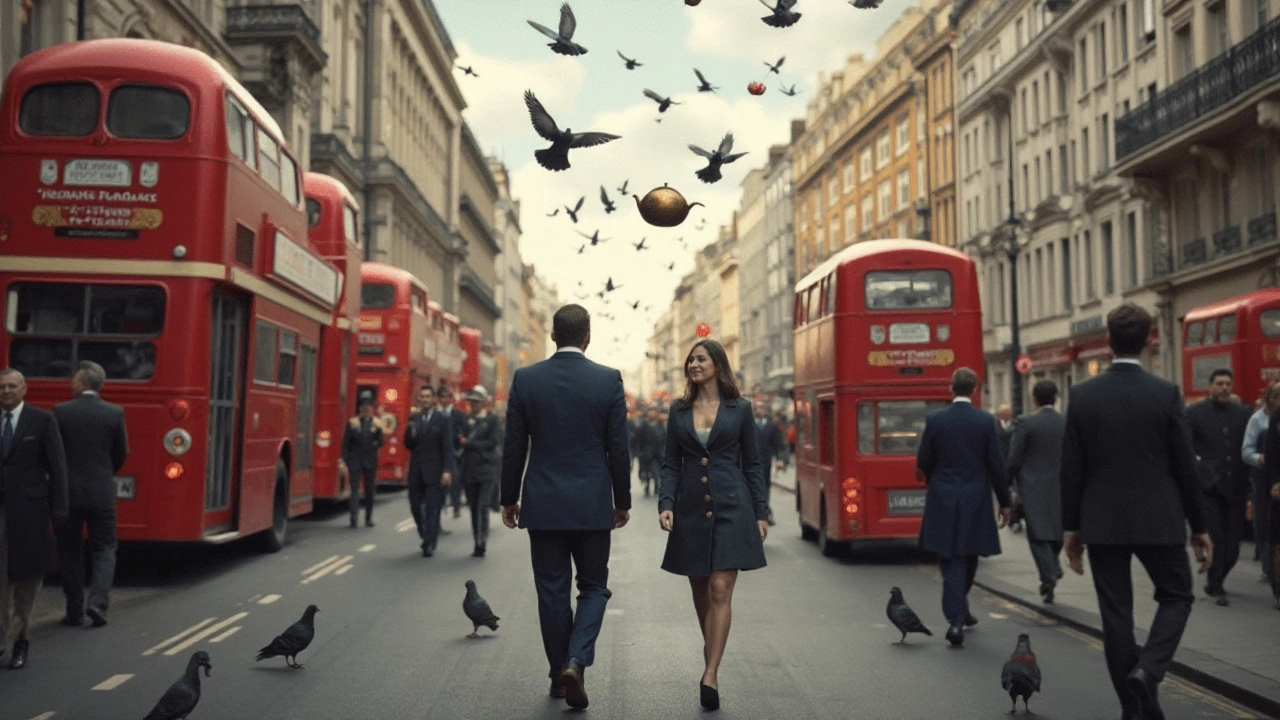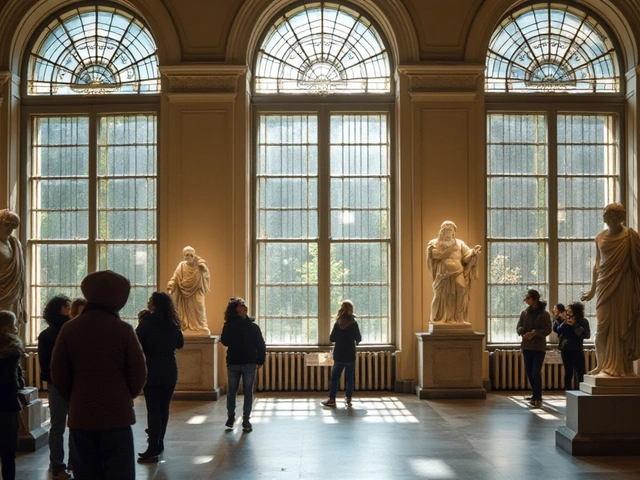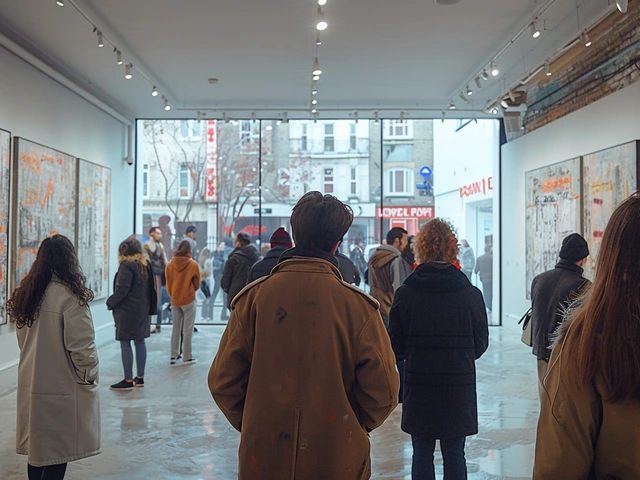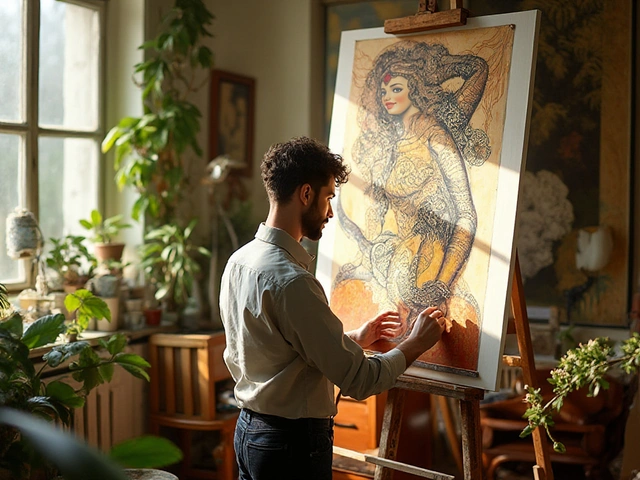Magical realism is like stepping into a world where the familiar dances with the fantastical, and the impossible seems not just possible, but matter-of-fact. Rooted in a narrative style that enriches every corner of the globe, this genre invites readers to question their perceptions of reality through subtle juxtapositions of the extraordinary and the mundane. It's a storytelling approach that both enchants and challenges, delivering profound insights beneath its shimmering surface.
In exploring magical realism, one might encounter towns where spirits linger casually or discover worlds richly layered with meaning beneath their surface simplicity. This genre emerged as a significant force in the 20th century, particularly in Latin America, where writers deftly wove the inexplicable into the fabric of everyday life. Yet, its influence spans beyond these borders, encouraging audiences worldwide to ponder life’s complexities through a magical lens.
Join us as we delve into the origins, characteristics, and cultural impact of this captivating literary style, and perhaps inspire your own creative endeavors in the realm of magical realism.
- The Origins and Evolution of Magical Realism
- Key Characteristics of Magical Realist Works
- Impact of Magical Realism on Literature and Culture
- Tips for Writing Magical Realism
The Origins and Evolution of Magical Realism
Magical realism, a genre that skillfully blends reality with fantastical elements, traces its roots to Latin America in the early to mid-20th century. Yet, the term's inception comes earlier from the realm of art criticism. Initially coined by German art critic Franz Roh in the 1920s, "Magischer Realismus" was used to describe a form of painting that sought to portray reality with a mystical twist in post-expressionist artwork. These magical realist paintings aimed to capture the wonder inherent in the mundane.
The literary adaptation of magical realism took flight in the 1940s and 1950s with authors like Jorge Luis Borges paving the way. Borges's work, characterized by a labyrinthine mix of philosophy, metaphysics, and fantastical elements, laid a foundation for what would later flourish as a defining characteristic of South American literature. Gabriel García Márquez, perhaps one of the most celebrated magical realist writers, famously employed this genre in his seminal work, "One Hundred Years of Solitude." This novel, published in 1967, paints a vivid portrait of the fictional town of Macondo, where the extraordinary is interwoven with the everyday, reflecting both the surreal and real aspects of human experience.
"It always amuses me that the biggest praise for 'One Hundred Years of Solitude' comes from scholars in the United States, where the novel is replete with things that are completely unexplainable," García Márquez once remarked, illustrating the cultural interplay between literal and figurative narratives.
Beyond Latin America, magical realism found fertile ground across continents and cultures. In Eastern Europe, writers like Milan Kundera incorporated elements of this genre to depict the surreal aspects of life under totalitarian regimes. Similarly, Shahrnush Parsipur's "Women Without Men," written under Iran's socio-political turmoil, uses magical realism to illuminate the otherwise subdued narratives of women's lives.
The evolution of magical realism in literature didn't stop at exploration of political, cultural, and social themes. It has also extended into broader artistic forms including cinema and theatre. Films such as "Pan's Labyrinth" by Guillermo del Toro embrace magical realism by using visual storytelling to merge historical realities with mythical fantasies. In theatre, works like "Peter and the Starcatcher" intersperse fantastical elements within traditional narratives, inviting audiences to experience and question their understanding of reality.
As the genre continues to evolve, new voices are embracing and redefining magical realism, ensuring its relevance and adaptability in modern storytelling. Emerging writers around the world are infusing their narratives with magical realist elements, using this genre as a lens through which to examine identity, tradition, and modernity. Thus, magical realism remains an ever-evolving literary force, bending the contours of reality to reveal profound truths embedded within our everyday lives.
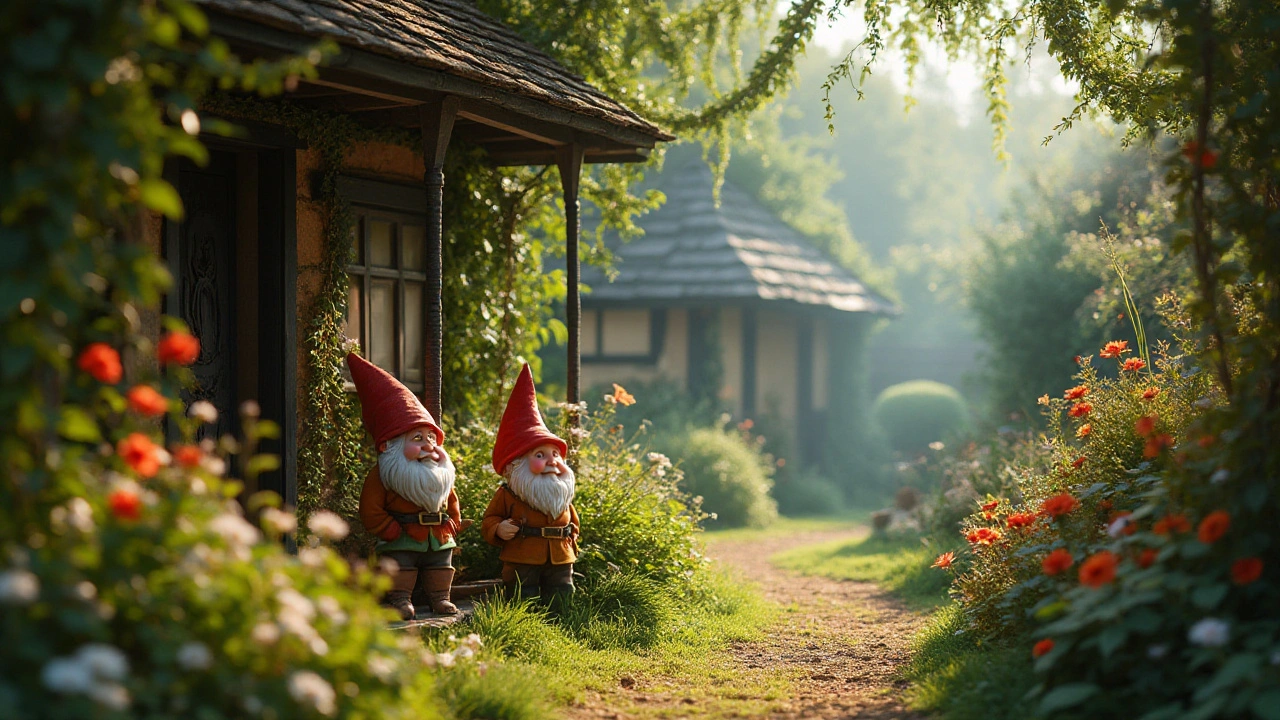
Key Characteristics of Magical Realist Works
At the heart of magical realism lies its unique blend of reality with the surreal, where fantastical elements mesh seamlessly into the ordinary, creating a narrative that challenges traditional perceptions of existence. This genre blurs lines between the magical and the real, making the extraordinary a part of everyday life. What sets it apart is its ability to present magical events with a matter-of-fact tone, allowing these occurrences to become an accepted part of the character's world. By doing so, magical realism intrigues and engages readers by weaving intricate tapestries where magic is part of the mundane.
Another notable characteristic of magical realism is its emphasis on the subjective nature of reality. In this genre, characters often perceive fantastic elements as natural. Their acceptance of the supernatural as a part of their reality creates a rich narrative experience. It's this sense of normalcy surrounding the magical that elicits a unique perspective on what constitutes reality. Often, magical realism draws from cultural myths and folklore, enriching its tapestry with a profound sense of historical and cultural depth. This connection to cultural narratives provides the genre with a unique ability to explore and critique societal issues and personal experiences.
A distinctive feature in these works is the layered complexity of time and space. Authors often play with temporal settings and spatial dimensions, allowing characters to traverse eras or worlds with fluidity. This manipulation of time and space not only strengthens the magical elements but also provides deeper insight into human experiences. An understanding of temporal instability broadens a reader's experience beyond what's visible, making the genre a rich area for exploration. The mundane is filled with possibilities of wonder and mystery, whether exploring an enchanted street or unraveling a family's unusual history.
Respected authors have experimented with this narrative style to expose truth and subjective experience. According to Nobel laureate Gabriel Garcia Marquez, in his remarkable novel One Hundred Years of Solitude, there are moments where "what happens in that book makes everything believable." The way myths and history intermingle offers a nuanced reflection of cultural realities and personal conflicts. Another literary giant, Isabel Allende, effectively captures the essence of magical realism in her works by combining political circumstances with personal history, demonstrating the genre's capacity to illuminate broader truths. Indeed, the world of magical realism is as enchanting as it is thought-provoking, serving as a vehicle for exploring the human condition.
The genre typically adopts a third-person perspective that enhances the reader’s suspension of disbelief, promoting a sense of objectivity within an otherwise fantastical narrative. This narrative voice lends credibility to the magical events by presenting them without rationalization. As if part of the everyday, these occurrences invite contemplation rather than incredulity, coaxing readers into a world where the boundaries of reality are beautifully undefined. Whether it's an entire town gripped by eternal rain or characters communicating with ghosts as naturally as they would with neighbors, these imaginative settings offer ample chances for readers to see the magic within their own realities.

Impact of Magical Realism on Literature and Culture
Magical realism, as a literary genre, has left an indelible mark on both literature and culture, stretching way beyond the pages of novels. The unique blend of reality and dreamlike elements has allowed writers to explore complex themes with profound subtlety, thereby encouraging readers to reconsider the nature of truth. Originating in Latin America, with towering figures like Gabriel García Márquez and Isabel Allende leading the way, magical realism has become a powerful vehicle for storytelling across the globe. Through its enchanting narratives, it invites writers and readers alike to engage with the world around them in new ways, offering a deeper understanding of cultural identity and social structures.
One of the most significant impacts of magical realism is its ability to address historical and societal issues within a framework that transcends the limitations of realistic storytelling. By weaving fantastical elements into everyday life, authors can highlight political and social realities in a manner that resonates emotionally while providing a buffer for discussing difficult topics. Márquez, in his celebrated work "One Hundred Years of Solitude," uses magical realism to chronicle the history and politics of Latin America, highlighting the absurdity and injustice with the kind of magical narrative only this genre affords. Such storytelling techniques offer a lens through which audiences can explore their cultural histories and identities in a more engaging, less confrontational manner.
Magical realism's influence extends far beyond the written word and into various cultural expressions, including film, art, and theater. Filmmakers like Guillermo del Toro have drawn inspiration from the genre, creating cinematic experiences that meld the fantastical with themes of trauma, memory, and identity. His film "Pan's Labyrinth" is a prime example, where the barriers between reality and fantasy blur, serving as a backdrop to explore the complexity of post-war Spain. This cultural crossover highlights how the principles of magical realism can offer powerful tools for creators to delve into the universal human experiences in visually compelling ways.
"What matters in life is not what happens to you but what you remember and how you remember it," García Márquez once said, encapsulating the essence of magical realism's impact on storytelling.
The genre also plays a pivotal role in opening dialogues about the human experience's mystical aspects. It invites a discourse not just on what is real or unreal but on the myriad possibilities that lie between those lines. This genre's presence in educational curriculums across the world has brought varied cultural narratives to the forefront, championing voices and stories previously marginalized by mainstream literary traditions. It challenges students and readers to think critically about the narratives they consume and understand their own multi-layered realities. As magical realism continues to inspire artists and thinkers, it transforms static interpretations of culture and life into vibrant tapestries woven with mystery, wonder, and reflection.
With each new generation of writers and artists embracing this style, fiction within the magical realism genre continues to evolve, proving its timeless relevance. Its fusion of the mundane with the magical offers not just a stylistic device but a powerful philosophical stance — one that dares to imagine the extraordinary hiding within everyday life. This ongoing dialogue between reality and magical realism enriches global literature and opens pathways for cultural exchange, understanding, and empathy. The genre's adaptability ensures its trajectory is as infinite and boundless as the dream worlds it conjures for us to explore.

Tips for Writing Magical Realism
Writing magical realism requires more than the addition of fantastical elements to a story. At its core, this genre asks writers to integrate the mystical seamlessly into the everyday, creating a tapestry where the lines between reality and fantasy blur without drawing attention to the stitches. Begin by grounding your narrative in the real world; think of it as anchoring your story in a familiar setting before introducing the extraordinary. The magical is meant to be accepted as part of the order of things, coaxing readers to suspend disbelief and embrace the narrative as inherently authentic. When crafting these surreal moments, aim for subtlety. Less is often more—allow the wonder to unfold naturally without overshadowing the characters or the plot.
Another crucial component lies in the themes you wish to explore. Many celebrated magical realist stories deal with profound human experiences, social issues, or cultural narratives. Authors such as Gabriel Garcia Marquez, whose works often delve into the nuances of Latin American identity and politics, use the magical to comment on realities that may be too complex or unpalatable in plain language. Consider what universal truths or personal insights you want to convey and let the magical elements serve as a metaphorical device to enhance these themes.
"Reality is not what it seems," wrote Marquez, emphasizing how magical realism offers a gateway to deeper truths that reside just beyond the veil of the commonplace.
Character development in magical realism should be particularly nuanced. Your characters must react to the magical with a sense of normalcy, as though it were an ordinary part of their existence. This approach helps maintain the equilibrium between the enchanting and the mundane. Write characters who live in a world full of magic but still grapple with everyday challenges and emotions. It might also be beneficial to explore folklore, myth, or local superstitions from your own background or that of your characters to imbue your narrative with unique, culturally rich magical elements. These components can add authenticity and depth to your story, providing readers with a distinct perspective.
Dialogue can serve as a powerful tool in subtly reinforcing the blend of real and magical. When characters speak about magical occurrences with the same matter-of-fact attitude they use for trivial matters, it reinforces the narrative's intrinsic logic. This technique can help reinforce an air of believability, anchoring the reader deeper into your magical real world. Aim for conversations that reveal emotional truths or nuances about the world even more so than through direct descriptions. Through the interactions of your characters and their conversations, the essence of the magical realism environment can be effectively conveyed without needing overt explanations.
Lastly, maintain a balance between description and action. While detailed imagery helps establish your setting and the magical phenomena within it, pacing is equally important in keeping your readers engaged. Allow the narrative to flow seamlessly, where the existence of magic is acknowledged rather than scrutinized, encouraging readers to experience the story’s full impact. By paying attention to these aspects and allowing your own imagination to wander, you can create a magical realist tale that resonates deeply with those who encounter it.

